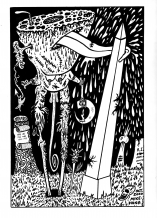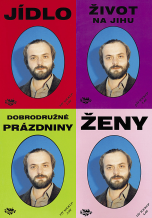| The Assembly for Culture in Ukraine: Shaking the Foundations of Ukraine’s Ministry of Culture | Alle Artikeln aus DIVUS LIVE (blog) | ||||||||||||
|
|||||||||||||
The Assembly for Culture in Ukraine: Shaking the Foundations of Ukraine’s Ministry of Culture27.07.2014 19:39ArtLeaks | en |
|||||||||||||
A conversation between Larissa Babij and Corina ApostolIn the following conversation the use the word “we” refers to past events (involving several or more participants of the Assembly) and positions that have been agreed upon and declared as common views of the ACU.The Assembly for Culture in Ukraine is essentially an ongoing meeting of citizens who are concerned with how cultural processes in Ukraine are structured and intent on transforming these structures and pressing the Ministry of Culture to shift the vector of influence on culture from government ideology to the people who are the recipients and creators of cultural products and processes. One of the defining characteristics of the Assembly (one which is often criticized) is that it does not have a consolidated voice. Based on the principle of horizontality, which defies hierarchy, the Assembly functions through self-organization. Initia-tives come from individuals and the initiator is responsible for making his/her proposition happen. No one gives or fulfills orders. And no one is delegated the responsibility for speaking or answering or deciding for the group. The Assembly expresses its positions in letters addressed to particular government officials and in public statements published on the Internet. Audio and video recordings of almost all meetings are also available via the Internet within Ukraine. Corina Apostol (CA): I would like to start with very basic questions about how the Assembly came into being and how it’s developed over the past month. We’ve recently heard of cases of art workers’ protests in Bucharest or Belgrade, and even occupations of museums and public institutions; at the same time, these actions seemed to be effective only for a short period of time, as some kind of conscious-ness-raising moments. Larissa Babij (LB): The Assembly for Culture in Ukraine came into being after three months of continuous protest and civic tension in Kyiv and all over Ukraine. The Assembly has been meeting regularly in the basement of the Ministry of Cul-ture since February 23, 2014. Those who have been involved in the protests in some form or other have accepted the fact that you have to give up your daily routines and certain expectations in emergency situations. Work in the Assembly demands a lot of time, patience and flexibility, but there are enough people interested in re-forming culture in Ukraine that it has persisted for two months already, albeit with varying momentum. CA: How did you decide to occupy the Ministry of Culture? As I remember, the situation in Kyiv back in February was very dramatic and volatile, in terms of the political processes and protests on Maidan.
LB: The week between February 18-22 was the most violent on the Maidan: a hundred people were killed and many of my colleagues and I were volunteering in hospitals. As former President Yanukovych seemed ready to withdraw, on February 21, Ukrainian students took over the Ministry of Education. The following day I saw a Facebook post from an unfamiliar person calling people to gather and oc-cupy the Ministry of Culture. Since I have often picketed the Ministry of Culture together with the Art Workers’ Self-defense Initiative (ISTM), most recently in a series of demonstrations aimed at the Ministry itself in January, I decided to go and investigate this proposal to occupy the Ministry. CA: How did you manage to establish yourselves inside the building?
LB: After an hour or two of standing and calling through the windows of the Min-istry, someone from inside opened the doors, and then they let us inside. There was an unused space in the basement that we were allowed to set up for our discussions. We then decided to call an official meeting the next day for everyone who works in or is concerned with the cultural sphere and how it has been organized thus far in Ukraine. CA: What was the reaction of the people still working in the Ministry? Did they join the discussions? LB: Initially no, the occupation occurred over the weekend and almost nobody was working there. At that time there was no Minister of Culture, because all the for-mer cabinet members had been dispersed and no one had been appointed yet. On the day after entering the Ministry a few of the occupiers sealed all the doors of its offices to prove that no documents had been removed, and we continued to block access to most Ministry employees until the new Minister was appointed. CA: And how was the new Minister appointed? LB: He was put in power by the new government, but he also had the support of the Maidan. He is an actor who spent a lot of time on the Maidan stage. On the most violent days in February, when there was a lot of shooting, he was there, trying to calm people and giving directions where medical help was needed. His appoint-ment, like that of other current Ministers, was an attempt to build a bridge between the protests and the new government. CA: The Assembly was also responsible for putting out a series of concrete de-mands to change the Ministry. How would they affect the way the Ministry is organized and functions?
LB: In the first week when we were physically blocking the building of the Min-istry we set out some demands: one was to set up a financial audit of the institu-tion, one was about lustration. When the minister was appointed, he met with the Assembly and signed a memorandum, which included (in addition to the above-mentioned demands) his promise to recognize the legitimacy of the Assembly, im-plement structural reforms and to develop together with the Assembly mechanisms by which the public can exercise control over the Ministry’s decisions and policies. While the first demands are practically aimed at preventing further corruption, the other points demand that the Ministry begin to function as a public institution, listening to and serving the people. The main task was to start developing new or-ganizational mechanisms in collaboration with the Minister, and in parallel develop mechanisms through which the Assembly and the general public could have access to and influence the decision-making processes of the Ministry. CA: The Assembly adopted a non-hierarchical model of organization, similar to that used in the Occupy movement. If I understand correctly, there is not one lead-ership, but everyone who is present at these meetings can influence the process. LB: Yes, that was a fundamental decision. When the group was just forming, we realized that if we are trying to change the system, the more the Assembly mim-ics the existing system the less likely we are to make meaningful changes. The Assembly is a method for collectively discussing issues and making decisions; its membership is fluid. There have been tensions in the group over maintaining this non-hierarchical, horizontal organization, which demands a lot of time and pa-tience from its participants. The second meeting with the Minister, which revealed how little interest the official structure actually has in the ideas and demands of the Assembly, deepened a schism between the Assembly’s participants over priorities and fundamental principles. While there are staunch proponents of the Assembly as such, even though its radical, utopian methods may ultimately only yield small esults, others prefer efficiency and effectiveness, especially in influencing policy and decisions within the specialized departments of the Ministry, to the slow, laborious process of systemic change. However, the Assembly is still meeting and working through these differences to identify common goals and ways to work together. CA: Could you say a bit more about the composition of the Assembly and the participatory impetus behind different groups in its constituency?
LB: The Assembly is open to everyone: the amount of people that show up for any given meeting varies from just a few people to several hundred. I’d say there are around 30-40 people who are very active, and each meeting usually has around 20 attendees, including continuous newcomers. People participating in the Assembly, while they may be members of various groups and organizations, speak for them-selves and do not represent the interests of any other group. Thus the Assembly does not supersede, replace or deny any other cultural organizations. CA: Tell me a bit about the drawings created within the Assembly that begin to describe what new structure you had in mind.
LB: The Assembly agreed that the Ministry was not serving the needs of culture, but instead serving whatever ideology the government wanted to promote and functioning as a mechanism for corruption. Since the system itself is dysfunctional, regardless of the individuals working in it, the challenge is finding a way to change the entire system, without immediately dissolving the existing structures. CA: How do you negotiate the relation between the Kyiv-based Assembly and other cities across Ukraine? LB: The Assembly for Culture in Ukraine is nationwide. From the beginning in other cities such as Zaporizhya, Kharkiv, Lviv, people formed their own assemblies. In an attempt to avoid centralization in the capital, the assemblies in Kyiv and other cities share a lot of their minutes and recordings of meetings online. Informa-tion is also passed along personally when people travel between cities. CA: What are some of the most important things that you feel the Assembly has achieved so far? LB: As in the model I described above, where cultural administration focuses on aspects of conservation, development and innovation, I have observed that the members of the Assembly include people who are conservators of an authoritarian system of thinking (waiting for a commands from above), people who believe that cultural management and other forms of “modernization” should be implemented in Ukraine’s cultural sphere, and people who see the Assembly as a means to invent new ways of working together. At its core the Assembly – as a foundation for Ukraine’s future culture system – really is about social relations. One of the impor-tant things is to keep the Assembly autonomous from the Ministry, which not only allows for a certain degree of unpredictability and mobility, but also clarifies the dif-ference between exercising one’s rights as a citizen and aspiring to power. It is also worth noting that the Assembly’s work to reform the Ministry of Culture began immediately after the Yanukovych regime dissolved, affirming that cultural reform is fundamental to any kind of social, political or economic change.
27.07.2014 19:39
Empfohlene Artikel
|
|||||||||||||
|
04.02.2020 10:17
Letošní 50. ročník Art Basel přilákal celkem 93 000 návštěvníků a sběratelů z 80 zemí světa. 290 prémiových galerií představilo umělecká díla od počátku 20. století až po současnost. Hlavní sektor přehlídky, tradičně v prvním patře výstavního prostoru, představil 232 předních galerií z celého světa nabízející umění nejvyšší kvality. Veletrh ukázal vzestupný trend prodeje prostřednictvím galerií jak soukromým sbírkám, tak i institucím. Kromě hlavního veletrhu stály za návštěvu i ty přidružené: Volta, Liste a Photo Basel, k tomu doprovodné programy a výstavy v místních institucích, které kvalitou daleko přesahují hranice města tj. Kunsthalle Basel, Kunstmuseum, Tinguely muzeum nebo Fondation Beyeler.
|







![The Assembly for Culture in Ukraine: [b]Shaking the Foundations of Ukraine’s Ministry of Culture[/b]](http://88.208.121.86/upload/articles/53d53ed60ae5b.detailThumb.png)
























 We Are Rising National Gallery For You! Go to Kyjov by Krásná Lípa no.37.
We Are Rising National Gallery For You! Go to Kyjov by Krásná Lípa no.37.
Kommentar
Der Artikel ist bisher nicht kommentiert wordenNeuen Kommentar einfügen